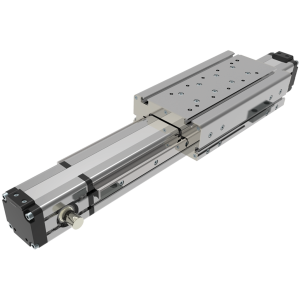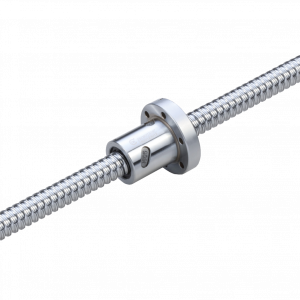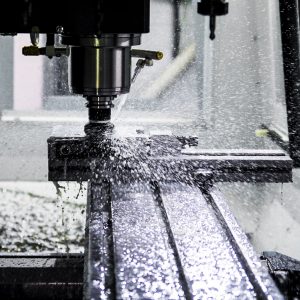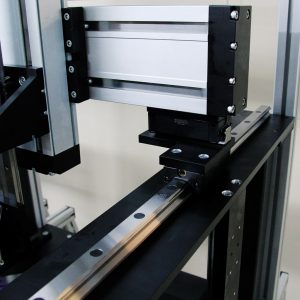An introduction to linear actuators
Linear actuators move a load in a linear motion, either forward and backward or up and down. Linear actuators are found across all sorts of industries and applications, from industrial machine tools to transportation, from disk drives and printers to automatic doors and valve actuators. Selecting the right one for your application is crucial to achieving the performance and output that you require to ensure that your motion control system operates optimally. This guide takes you through some of the basic types and functions of linear actuators, along with their benefits.
What is a linear actuator?
A linear actuator is a means of converting energy into a pushing or pulling force along a single axis. In electric linear actuators this usually involves the conversion of a rotational force from a motor to a linear action. Since hydraulics and pneumatics use cylinders, the motion produced by those systems is inherently linear.
Types of linear actuator
Belt Driven Linear Actuators
In belt driven actuators, an electric motor drives a shaft and wheel, and the wheel is engaged with a toothed belt drive. As the motor rotates the shaft this moves the belt, converting the rotation to a linear motion, which moves the carriage of the actuator forwards or backwards along a single axis. Belt driven linear actuators combine high speed with both accuracy and repeatability. They perform better than screw actuators for high speed/long stroke applications, especially in vertical applications where screw-driven systems may be prone to noise and resonance.
Ballscrew Driven Linear Actuators
Ballscrew driven linear actuators convert rotational motion from an electric motor to linear motion by using a helical screw which contains ball bearings. As the shaft is rotated the nut is driven and the ball bearings are cycled. Ballscrews have extremely high mechanical efficiency, requiring less torque for operation than other linear actuator options. They are well suited to applications requiring high precision and robustness such as high-performance machine tools, or very delicate and sensitive applications including medical devices.
Rod Type Ballscrew Actuators
These are ballscrew driven linear actuators that extend a shaft from the housing (like a hydraulic cylinder) instead of moving a nut or carriage within the length of the assembly. They would be used in place of pneumatic or hydraulic cylinders and are ideal for transfer handling operations requiring high acceleration or for demanding environments due to their sealed body construction.
Linear actuators from Matara
Matara’s in-house machining capability allows us to design and manufacture actuators for a range of applications. Our linear actuators can be purchased either as an off-the-shelf unit or as a fully assembled module or gantry. We can provide your actuator complete with motors and controls or without, as preferred. Our ranges include:
Belt driven linear actuators:
MTB internally guided linear actuator
MTS externally and internally guided actuator
MTE externally and internally guided actuator
MTZ internally guided actuator with PMI rail
Ballscrew driven linear actuators
CTV internally guided ballscrew actuators
MTV internally guided ballscrew actuators
KM space saving ballscrew driven actuator
Rod type ballscrew actuators
PNCE electric ballscrew driven actuator
For more information on the range of linear actuators available from Matara, visit our product pages or call one of our expert team on 01684 850 000.




